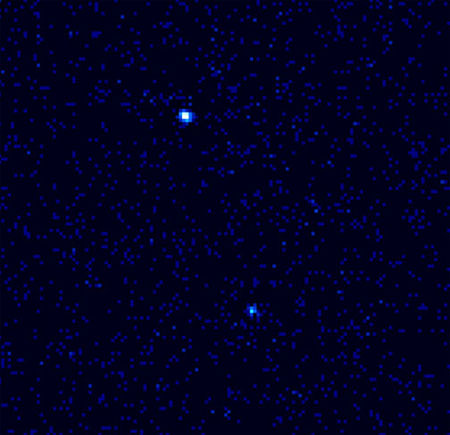
Image of the neutron star transient KS1731-260 during its quiescent cooling phase just after accretion halted. After this end of accretion, the crust relaxes into thermal equilibrium with the core, so that the cool surface temperature reveals the core temperature of the neutron star.
Image credit: NASA/Chandra/Wijnands et al.
A Lower Limit on the Heat Capacity of a Neutron Star Core
A team of scientists, led by Prof. Andrew Cumming of McGill University, has shown that observations of transient neutron stars can constrain the specific heat of matter at super-nuclear densities. The specific heat is the amount of energy required to raise the temperature by one degree. When the neutron star accretes, nuclear reactions in the outer layers deposit heat in the core. When accretion halts, the neutron star surface temperature can be measured from the observed spectrum, and the core temperature inferred. Since the amount of heat deposited in the core is known, the core temperature after the accretion outbursts constrains the core specific heat: the larger the specific heat, the smaller the rise in core temperature during the outburst.
The team applied this theory to three neutron star transients—KS 1731-260, MXB 1659-29, and XTE J1701-462—and found that in all cases, the minimum specific heat was a factor of a few less than that expected from a core comprising superfluid neutrons and protons, with electrons providing most of the specific heat. In particular, the team found that the inferred specific heat was too large to accomodate an exotic state of quark matter, called the color-flavor-locked phase, in the neutron star core.
This work was selected as an Editor's Pick for the journal Physical Review C.